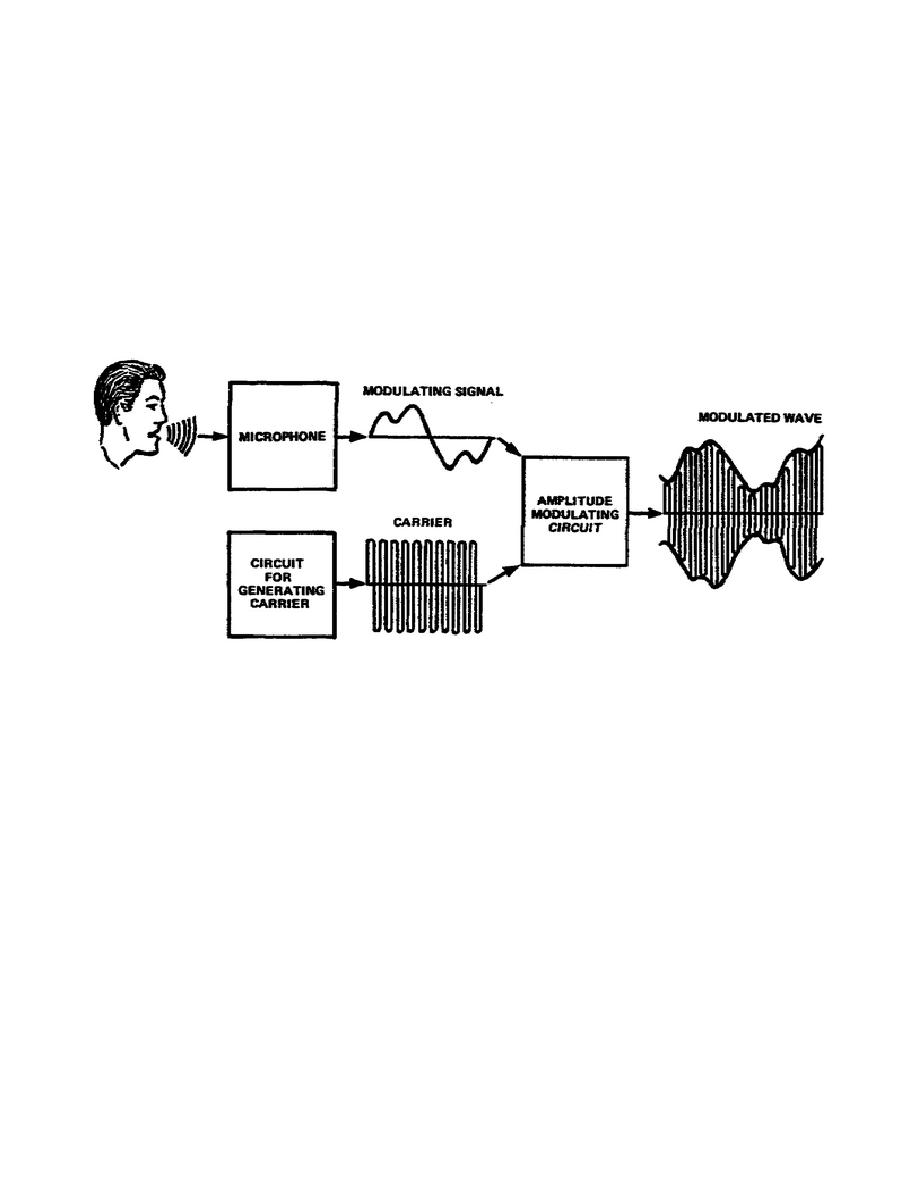
b. A good example of a single amplitude modulated system is the fuel-level indicator system
used in most cars. The fuel-level (the information) regulates the amplitude of an electrical current which
is then transmitted to an indicator on the dash-board panel. Thus the current is said to 'carry' the
information and is therefore referred to as the carrier.
c. AM adds range to a signal in the radio frequency range. The audio information in this
procedure is identified as a modulating signal; the radio frequency signal is called the carrier. The
purpose of the carrier is to get the message delivered. In other words, the carrier, as its name indicates,
carries the information to the receiver from the transmitter. The amplitude of the carrier signal varies as
the information varies (fig 4-1).
Figure 4-1. The amplitude modulating process. A modulating signal in the audio frequency range is
imposed upon an RF carrier signal. The result is the modulated carrier signal
d. We've discussed two signals, one being the modulation signal, the other the carrier signal.
These signals combined function at the carrier frequency. These signals are not alone when transmitting
a modulated carrier, because when two electrical signals are combined they produce other signals. This
process is called heterodyning, and as a result we get two other signals. One is developed when the
carrier signal is mixed or added to information or intelligence frequency, and is called the upper
sideband frequency. If one of these signals are deleted then what is remaining is called the lower
sideband frequency.
e. If these three frequencies are combined (upper and lower sidebands and the original carrier)
they form what is known as the modulated carrier signal. If a single frequency for the modulated signal
changes, then there will be a pair of sidebands created for every new frequency. When more sidebands
are added to the carrier, the modulated signal needs more space in which to operate in the broadcast
band.
36



 Previous Page
Previous Page
